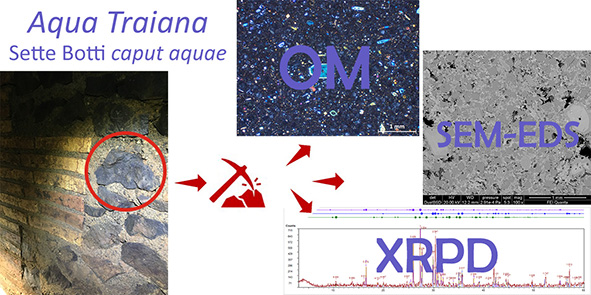Lithic materials from the 109 AD Roman aqueduct Aqua Traiana, (Sette Botti caput aquae, Rome)
DOI:
https://doi.org/10.13133/2239-1002/17972Abstract
Aqua Traiana is a still functioning Roman aqueduct, built in 109 AD under the Empire of Trajan, which carries water to the Janiculum Hill in Rome. During its long life (almost two thousand years), this aqueduct underwent a series of restoration, to fix the damages caused during barbarian invasions. Among them, the most important is the one commissioned by Pope Paul V in 1612 that re-established the functioning of the aqueduct and gave it a new name: Aqua Paola.
The aim of this study is to investigate, for the first time, the lithic materials used in its construction, focusing on the Sette Botti caput aquae, located at Trevignano Romano, north of Lake Bracciano (Italy). This archaeometric study was carried out starting with a macroscopic description, followed by XRPD, OM and SEM-EDS analyses on leucitite blocks from the masonry and the natural rock formation where the aqueduct was excavated, to define the mineralogical composition of the lithic materials and compare it with the geological setting of the area. The results define the leucitite blocks as mainly characterized by the presence of leucite and clinopyroxene whereas the natural rock formation of clinopyroxenes dispersed in the matrix of what has been identified as a tuff. The mineralogical composition of the archaeological materials is compatible with the volcanic products of Monti Sabatini Volcanic District, which belong to the Roman-type ultrapotassic series (HKS). The results suggest a local provenance of the construction materials of the aqueduct.

Downloads
Published
Issue
Section
License
Copyright (c) 2023 Periodico di Mineralogia

This work is licensed under a Creative Commons Attribution 4.0 International License.

